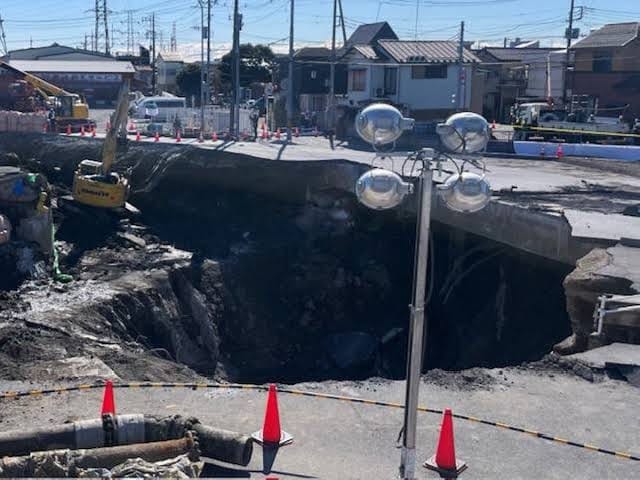Japan truck found in sewer pipe after sinkhole collapse
A truck that vanished into a massive sinkhole in Japan two weeks ago has been discovered inside a nearby sewer pipe, authorities announced. Drone images suggest a human body is inside the truck’s cabin, though officials have yet to confirm if it is the 74-year-old driver who went missing after the collapse.

A truck that vanished into a massive sinkhole in Japan two weeks ago has been discovered inside a nearby sewer pipe, authorities announced. Drone images suggest a human body is inside the truck’s cabin, though officials have yet to confirm if it is the 74-year-old driver who went missing after the collapse.
The sinkhole, now a gaping 40 meters (131 feet) in diameter, first opened at a busy intersection in Yashio City near Tokyo and is believed to have been caused by a sewer rupture. What began as a 10-meter-wide, 5-meter-deep hole quickly expanded, merging with another nearby sinkhole and forcing evacuations due to fears of further cave-ins.
Rescuers initially managed to retrieve the truck’s loading platform but were unable to access the cabin, where the driver was last known to be. He had briefly communicated with emergency responders after the accident on January 28, but contact was lost as the vehicle was buried under soil and debris.
On Sunday, authorities shifted their search from the sinkhole to the adjacent sewer system, where they discovered part of a driver’s seat. However, accessing the pipe remains a major challenge. “Search teams are unable to enter the 5-meter-wide pipe due to continuous water flow and high levels of hydrogen sulfide or sewer gas,” Saitama Governor Motohiro Ono said.
To reach the truck, workers must install a temporary bypass pipe to divert the water flow—an effort that could take up to three months, Ono added.
Meanwhile, authorities have urged 1.2 million residents in Saitama Prefecture to cut back on water use, including limiting showers and laundry, to reduce strain on the underground pipes. The water flow and ongoing ground instability have repeatedly halted rescue operations over safety concerns.
Sinkholes have become increasingly common in Japanese cities due to aging sewage infrastructure. Officials estimate it could take two to three years to fully repair the sewer rupture responsible for the disaster.













